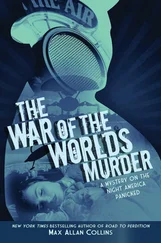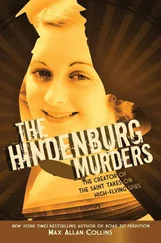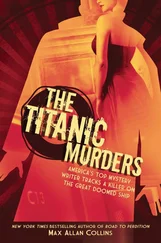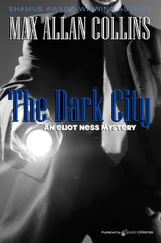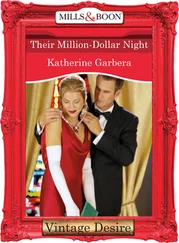Max Collins - The Million-Dollar Wound
Здесь есть возможность читать онлайн «Max Collins - The Million-Dollar Wound» весь текст электронной книги совершенно бесплатно (целиком полную версию без сокращений). В некоторых случаях можно слушать аудио, скачать через торрент в формате fb2 и присутствует краткое содержание. Жанр: Криминальный детектив, на английском языке. Описание произведения, (предисловие) а так же отзывы посетителей доступны на портале библиотеки ЛибКат.
- Название:The Million-Dollar Wound
- Автор:
- Жанр:
- Год:неизвестен
- ISBN:нет данных
- Рейтинг книги:3 / 5. Голосов: 1
-
Избранное:Добавить в избранное
- Отзывы:
-
Ваша оценка:
- 60
- 1
- 2
- 3
- 4
- 5
The Million-Dollar Wound: краткое содержание, описание и аннотация
Предлагаем к чтению аннотацию, описание, краткое содержание или предисловие (зависит от того, что написал сам автор книги «The Million-Dollar Wound»). Если вы не нашли необходимую информацию о книге — напишите в комментариях, мы постараемся отыскать её.
The Million-Dollar Wound — читать онлайн бесплатно полную книгу (весь текст) целиком
Ниже представлен текст книги, разбитый по страницам. Система сохранения места последней прочитанной страницы, позволяет с удобством читать онлайн бесплатно книгу «The Million-Dollar Wound», без необходимости каждый раз заново искать на чём Вы остановились. Поставьте закладку, и сможете в любой момент перейти на страницу, на которой закончили чтение.
Интервал:
Закладка:
Montgomery, of course, continued to star in motion pictures through the late forties; but he began directing, as well, and was a pioneer in the early days of TV. His interest in politics and social concerns never abated; he was the first TV media adviser to a U.S. president (Eisenhower) and was a vocal critic of the abuses of network TV, being an early advocate of public television. He also continued to be outspoken on the subject of the mob’s influence on Hollywood; his Chicago contact in such matters was Bill Drury.
Bill waged his war against the mob for the rest of his short life, despite largely trumped-up charges of misconduct that finally lost him his badge. He was fighting for reinstatement, and preparing to testify to the Kefauver Senate Crime Investigating Committee, when he was shotgunned to death in his car on September 25, 1950.
On October 5, 1943, Paul “the Waiter” Ricca, Louis “Little New York” Campagna, Phil D’Andrea, Frank Maritote (a.k.a. Diamond), Charles “Cherry Nose” Gioe and John Roselli were found guilty in the federal court in New York. Each was sentenced ten years and fined $10,000. A co-conspirator, Louis Kaufman, head of the Newark, New Jersey IA local, got seven years and a $10,000 fine. I did not testify against them; with Nitti no longer a defendant, and after a discouraging interview with me, Correa declined to call me.
Ricca, Campagna, Gioe and D’Andrea walked out of stir on August 13, 1947, having served the bare one-third minimum of their sentences that it took to make them eligible for parole. Nobody in history ever got out of prison on the very day they became eligible for parole-till Ricca and company. The fix, obviously, was in-and it stretched clear to Tom C. Clark, attorney general of these United States, who (it was said) received from Ricca, by way of payment, the next open seat on the Supreme Court, in 1949. Of course, it was actually President Harry Truman who nominated Clark-Campagna’s lawyer, by the way, was St. Louis attorney Paul Dillon, Truman’s “close personal friend” and former campaign manager.
I don’t know, exactly, what became of Nick Dean, his wife, and (I presume) that fabled hidden million Estelle Carey never had. The government tried to deport him, back in the early fifties, but it fell through. Last I heard of him, he was in South America. He may be there still.
Browne simply faded away. For a time he had a farm in Woodstock, Illinois, near Chicago; and I heard he moved from there to a farm in Wisconsin. I hear he died of natural causes. If so, he managed that by keeping out of any further union and Outfit business, after his release from prison.
Bioff was the Outfit’s prime target, but he too, for a time, was spared. While still in prison, Ricca was said to have ordered contracts on both Bioff and Westbrook Pegler, but was talked out of it, having been advised that killing them would only create martyrs, and public opinion would be so against Ricca and company that their paroles (already in the works) might not go through. A low profile was needed.
That was advice Bioff might well have taken. But in 1948 he helped the government again, testifying in a tax case against the Outfit’s Jake Guzik and Tony Accardo. Then he belatedly took the low-profile route, settling with his wife and kids on a farm outside Phoenix, Arizona, where he became a stockbroker. He called himself Al Nelson, and got chummy with Barry Goldwater, to whose campaign for U.S. Senate he’d made a political contribution of $5,000.
But, gradually, Willie’s itch for action got him back in the mob’s domain. By early 1955 he was trying to worm his way into the gambling scene in Nevada, specifically a joint in Reno, using the same old strong-arm tactics he’d perfected as a pimp. And in the winter of that same year he was hired by Gus Greenbaum to be in charge of entertainment at the Riviera Casino in Las Vegas; Greenbaum was discouraged by his Outfit friends from hiring Bioff, but Gus felt Willie, with his Hollywood contacts, could “persuade” big-name acts to work cheaper. Labor man Willie had no problems working for management.
Two weeks after his latest airplane ride with Senator Goldwater (the senator, in his private plane, from time to time chauffeured Bioff and his bride to various parties around the Southwest), Al Nelson, a.k.a. Willie Bioff, strolled out of the kitchen door of his luxurious Phoenix home on East Bethany Road and climbed behind the wheel of his pickup truck. He waved to his wife; she was waving back, from the kitchen window, when he put the foot to the starter, which was followed by an explosion that blew the truck and Bioff apart, showering Mrs. Nelson/Bioff with glass from the window where she’d been waving. Every window in the house was shattered. And parts of Willie and his truck lay glistening in the desert sun. The former panderer’s charred former finger bearing a $7,500 diamond ring was found in the grass two hundred feet from the house.
Willie’s Vegas mentor Greenbaum was killed in 1958; he and his wife were trussed up in their home and their throats slashed.
Such deaths were typical of the post-Nitti Outfit’s style; the headlines were often bloody, the heat was frequently stirred up. Not until the 1960s did the style revert, somewhat, to Nitti’s lower-key approach.
The Chicago local of the IATSE, by the way, continues to be linked to the Outfit; in 1980 the Chicago Tribune reported that the feds had identified twenty-four men with mob ties as members of Local 110. And the second-highest-paid labor leader in the entertainment industry, Variety said in 1985, was the business manager of that local, who took home nearly a million in salary and expenses over the latest ten-year period.
As for me, from time to time I had dealings with Nitti’s successors, but never again did I come to know one of the mob bosses in the way I knew Nitti. My agency, A-1, is still around; but I retired years ago.
Barney? On January 12, 1947, he was released from the U.S. Public Health Service addiction hospital in Lexington, Kentucky, where he had admitted himself voluntarily three months earlier. He’d gone that route because (he told me later) he heard “those private sanitariums ain’t tough enough.” Also, by going to a government hospital, he’d make a clean breast of it, publicly; he might encourage others with the same problem to come forward, too. It was also a gesture to his wife, who had recently left him, of his sincerity about quitting the stuff. Cathy was there for him, when he got out of Lexington.
“The withdrawal gave me the miseries,” he told me, “because the reduced dose of morphine wasn’t enough to kill the cramps and the sweats. I learned quick enough where the expression ‘kick the habit’ come from. When they gradually cut down my dope, I got spasms in the muscles of my arms and my legs actually kicked. And then I was back there again, Nate. On the Island. I kept fighting the Japs in that muddy shell hole, over and over again. But now I don’t have to go back there no more.”
I hope nobody does.
Despite its extensive basis in history, this is a work of fiction, and a few liberties have been taken with the facts, though as few as possible-and any blame for historical inaccuracies is my own, reflecting, I hope, the limitations of my conflicting source material, and the need to telescope certain events to make for a more smoothly flowing narrative. The E. J. O’Hare and Estelle Carey cases are complex and, in order to deal with them both within this one volume, the use of compressed time and composite characters was occasionally necessary. While in most cases real names have been used, I have at times substituted similar or variantly spelled names for those of real people, when these real people-particularly, more minor, non-“household name” historical figures-have been used in a markedly fictionalized manner. Such characters include Nate and Barney’s fellow Marines and soldiers in the Guadalcanal section; Sergeant Donahoe; the Borgias; and Wyman. All of these characters did, however, have real-life counterparts.
Читать дальшеИнтервал:
Закладка:
Похожие книги на «The Million-Dollar Wound»
Представляем Вашему вниманию похожие книги на «The Million-Dollar Wound» списком для выбора. Мы отобрали схожую по названию и смыслу литературу в надежде предоставить читателям больше вариантов отыскать новые, интересные, ещё непрочитанные произведения.
Обсуждение, отзывы о книге «The Million-Dollar Wound» и просто собственные мнения читателей. Оставьте ваши комментарии, напишите, что Вы думаете о произведении, его смысле или главных героях. Укажите что конкретно понравилось, а что нет, и почему Вы так считаете.

